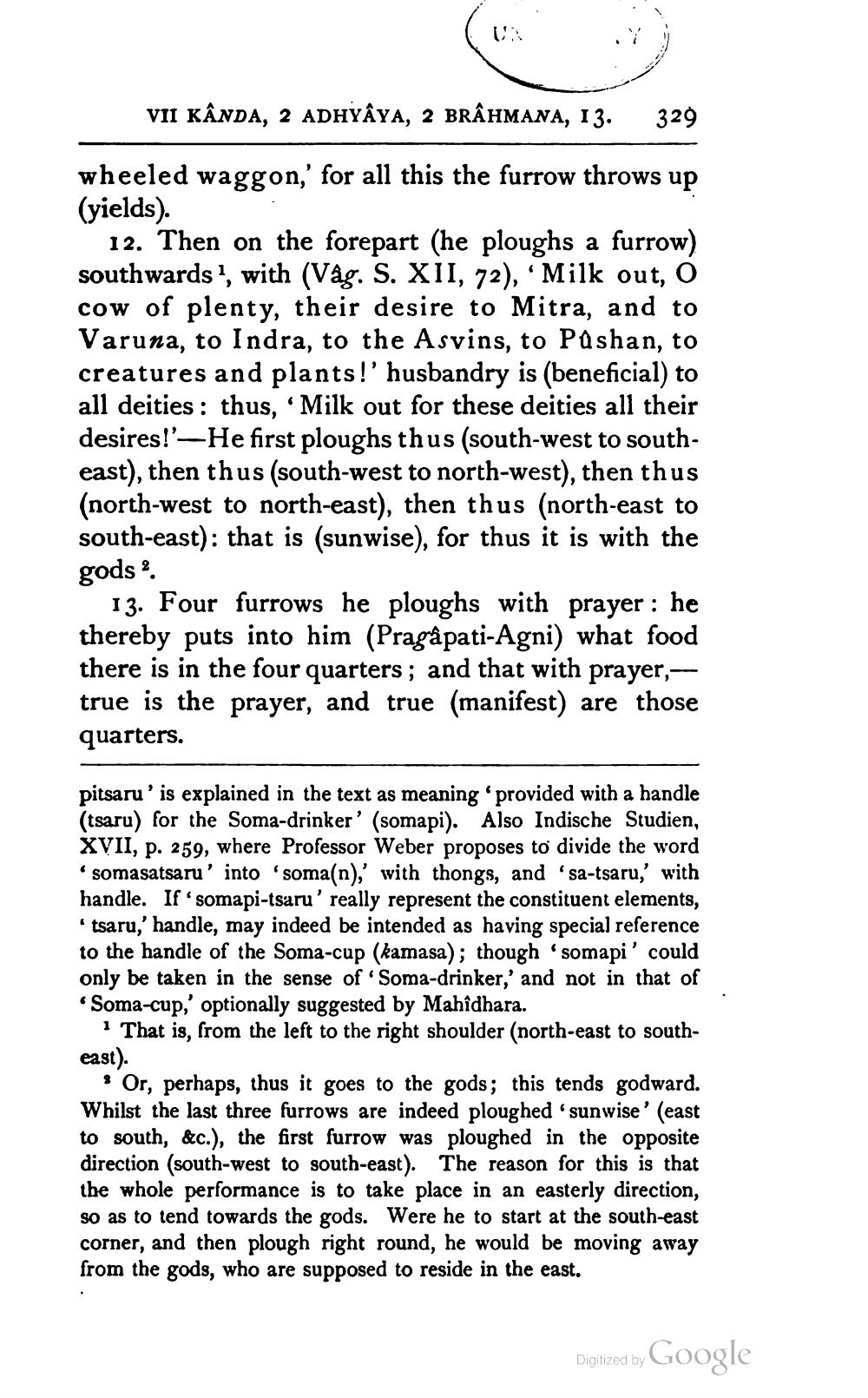________________
VII KÂNDA, 2 ADHYAYA, 2 BRÂHMANA, 13.
329
wheeled waggon,' for all this the furrow throws up (yields).
12. Then on the forepart (he ploughs a furrow) southwards !, with (Våg. S. XII, 72), 'Milk out, O cow of plenty, their desire to Mitra, and to Varuna, to Indra, to the Asvins, to Pashan, to creatures and plants!' husbandry is (beneficial) to all deities: thus, ‘Milk out for these deities all their desires!'-He first ploughs thus (south-west to southeast), then thus (south-west to north-west), then thus (north-west to north-east), then thus (north-east to south-east): that is (sunwise), for thus it is with the
gods ?
13. Four furrows he ploughs with prayer : he thereby puts into him (Pragâ pati-Agni) what food there is in the four quarters; and that with prayer, true is the prayer, and true (manifest) are those quarters.
pitsaru' is explained in the text as meaning 'provided with a handle (tsaru) for the Soma-drinker' (somapi). Also Indische Studien, XVII, p. 259, where Professor Weber proposes to divide the word
somasatsaru' into soma(n);' with thongs, and sa-tsaru,' with handle. If somapi-tsaru' really represent the constituent elements,
tsaru,'handle, may indeed be intended as having special reference to the handle of the Soma-cup (kamasa); though 'somapi' could only be taken in the sense of Soma-drinker,' and not in that of *Soma-cup,' optionally suggested by Mahîdhara.
That is, from the left to the right shoulder (north-east to southeast).
? Or, perhaps, thus it goes to the gods; this tends godward. Whilst the last three furrows are indeed ploughed 'sunwise' (east to south, &c.), the first furrow was ploughed in the opposite direction (south-west to south-east). The reason for this is that the whole performance is to take place in an easterly direction, so as to tend towards the gods. Were he to start at the south-east corner, and then plough right round, he would be moving away from the gods, who are supposed to reside in the east.
Digitized by Google




